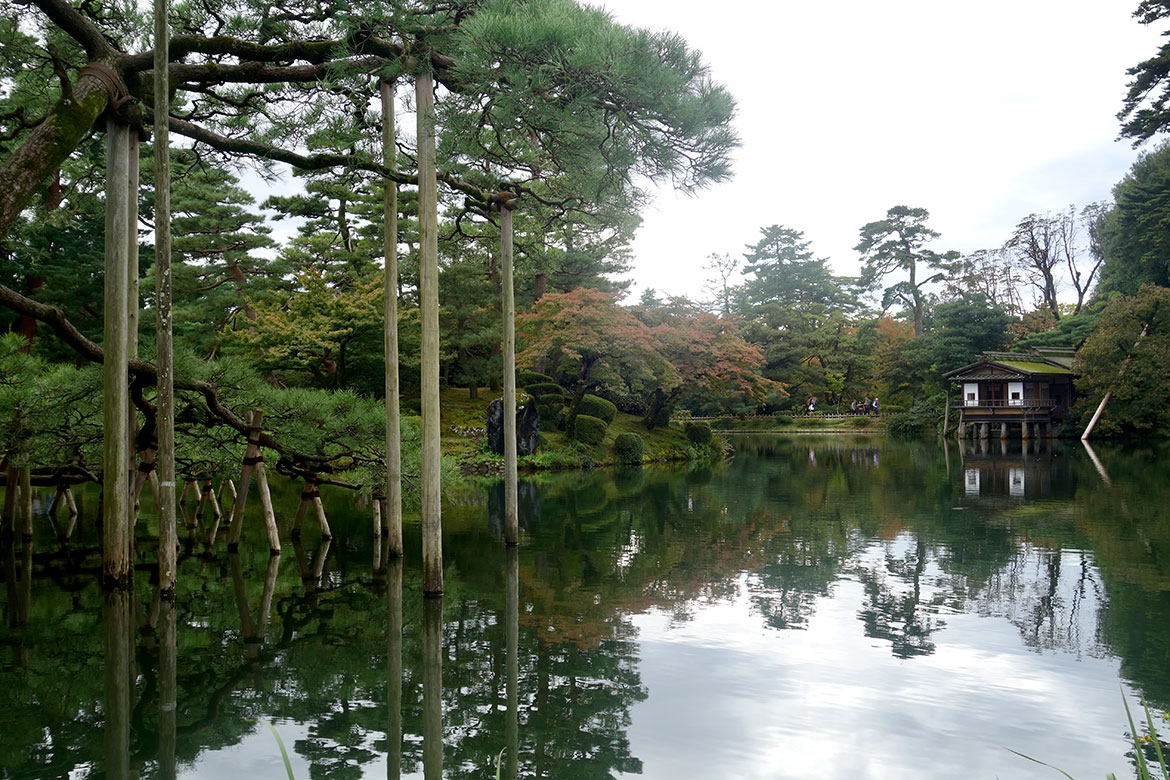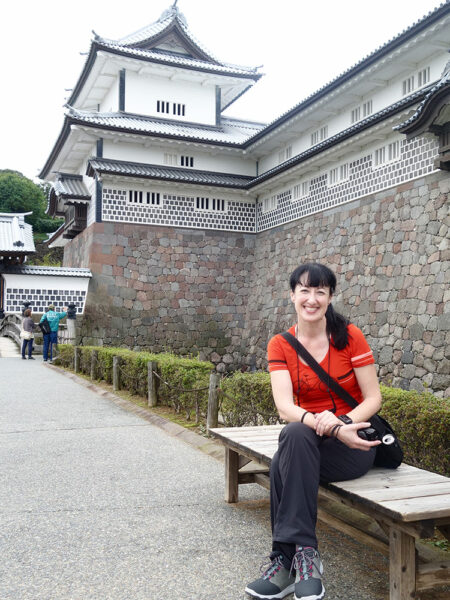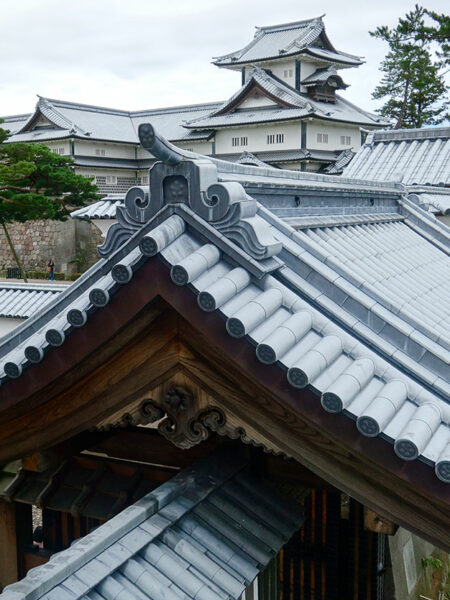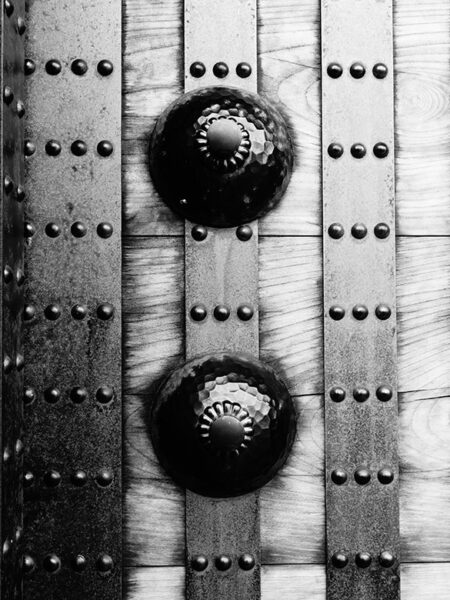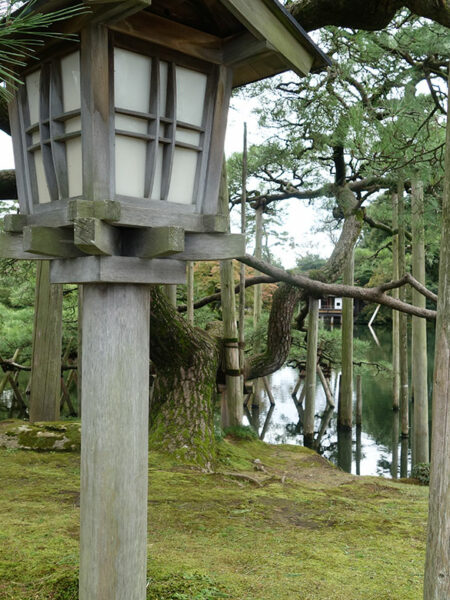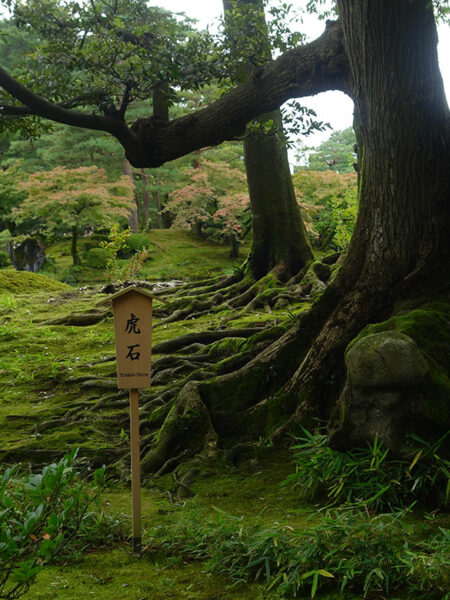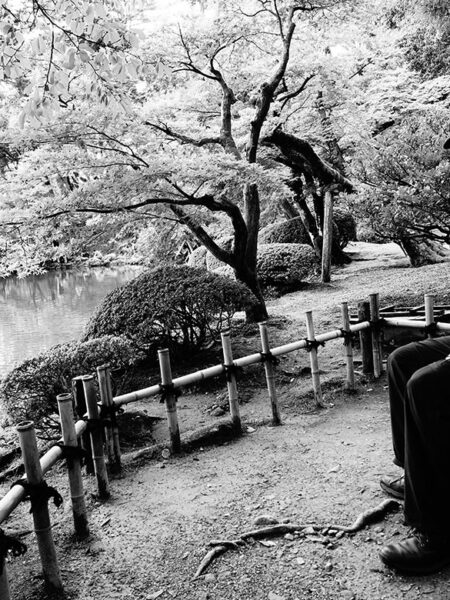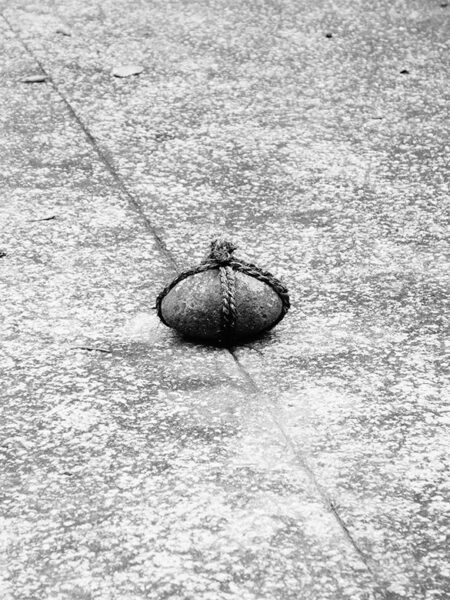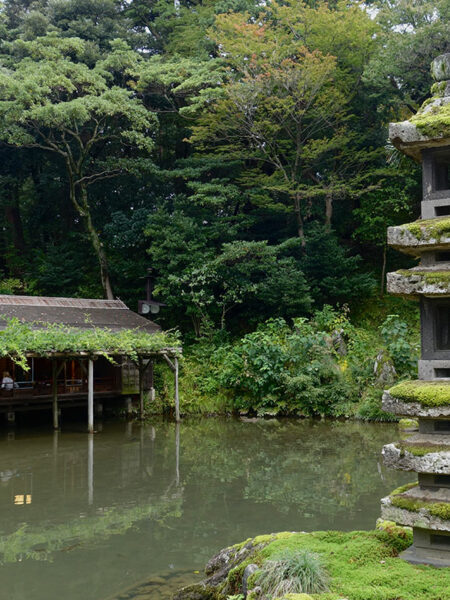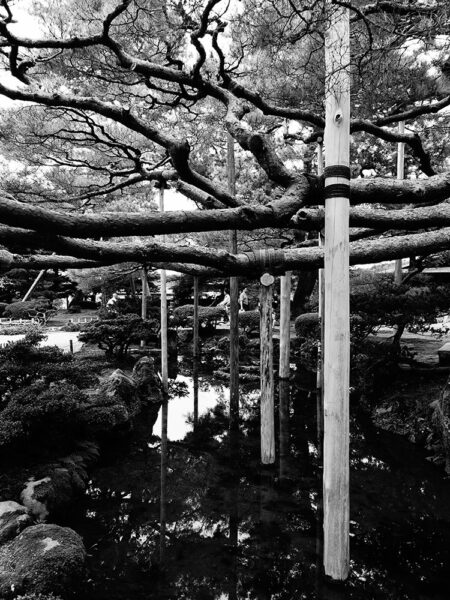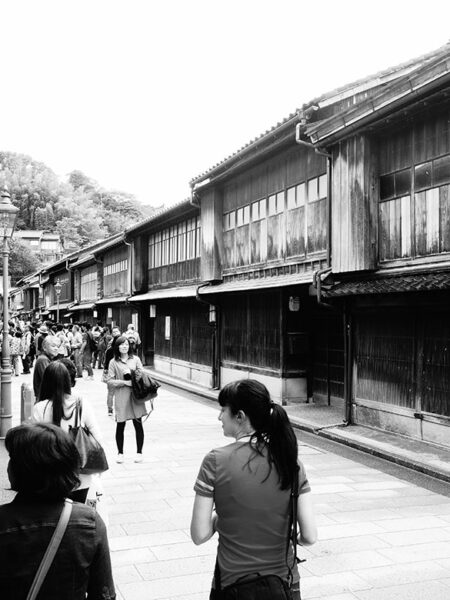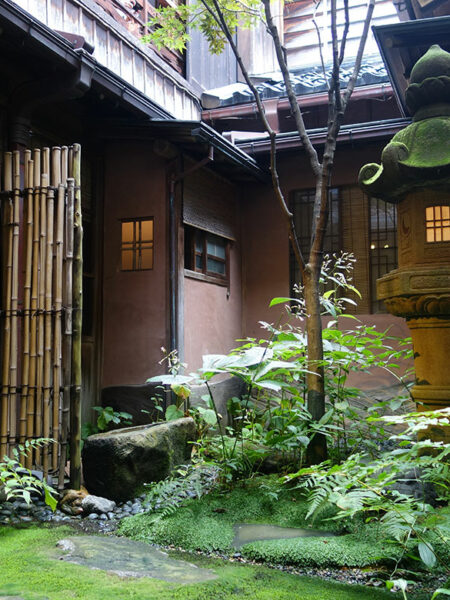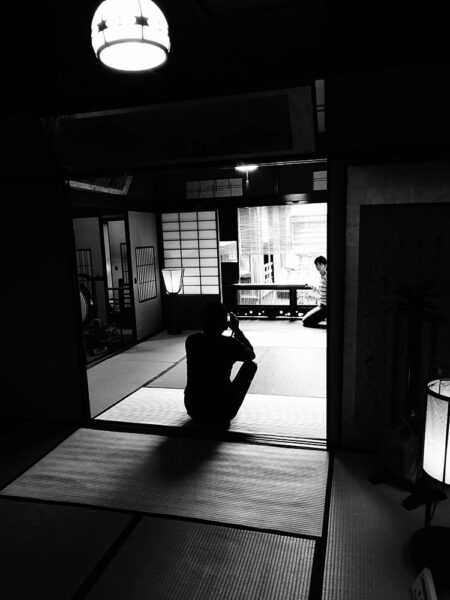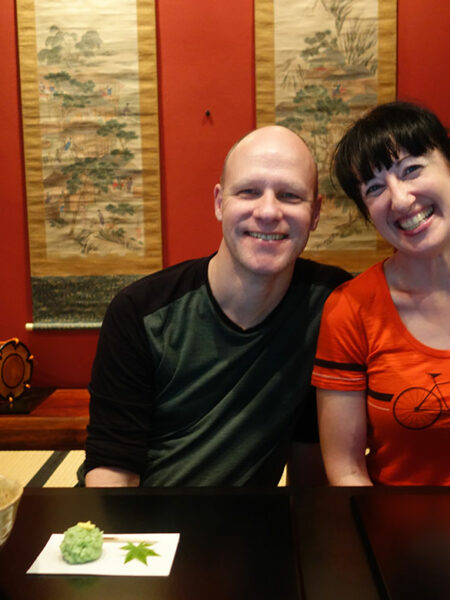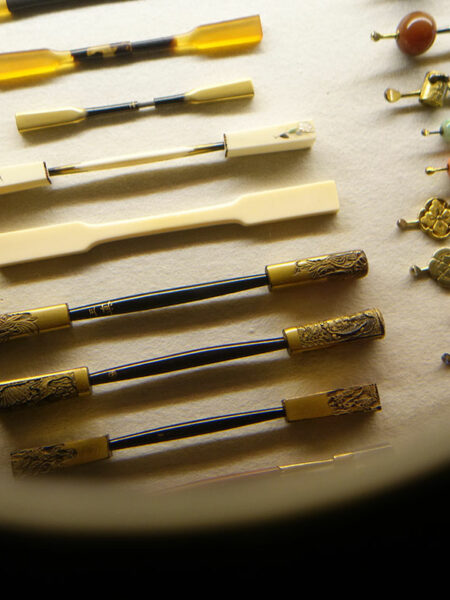The bed was large, and not as hard as those of the last four nights, but otherwise this is a characterless business hotel. I was woken in the night by rain dripping loudly at the window, then managed to break some plastic piece as I struggled with the fastening in the dark – so my sleep was broken somewhat!
We had breakfast in the cafe downstairs after using the hotel laundry to wash our clothes. Later they got a spin in the dryer, then we artfully arranged the damp clothes all over our hotel room.
All this mucking about meant we didn’t get out into the fresh air until 10:30am. We walked down to the large, modern station (the area around our hotel is a dull business district that reminded me of Canberra), easily bought a day bus pass for the tourist attraction loop, and got on the bus which took us to Kanazawa Castle Park. Kanazawa has a very efficient bus system which makes it easy to get around, despite the fact the city is quite spread out.
We entered the castle grounds though the Ishikawa-mon gate and explored the spacious grounds (wide expanses of perfectly tended grass that no one walked on, despite the lack of signs) and the restored parts of the castle, which have been completely rebuilt using original techniques. I’m in two minds when it comes to this kind of ‘restoration’ – it feels fake, and yet there would be nothing but foundations if the original archaeology had been left undisturbed. I’m not sure which is the better approach, but in any case the craftsmanship of the timber joinery was very impressive, as were the completed buildings and gates. The originals all burnt down in the 1700s. It’s a theme that would be repeated many times during our trip – building largely in wood meant that most major buildings were consumed by fire multiple times in their history (often culminating in the ultimate destruction of WWII bombing).
It was a warm, humid day, especially when the sun came out at lunchtime. We found a cafe, and Carol had an egg sandwich with salad while I had katsu-don again, only this time with miso soup, sashimi and pickled vegetables.
Then we headed out again to explore the nearby Kenrokuen Garden; apparently one of the top three gardens in Japan. Lots of people wandering about in touristy packs, which spoiled the peaceful atmosphere somewhat, but the mossy swathes, gorgeous old trees propped up with poles, picturesque ponds and tea houses were beautiful.
Back on the loop bus, we got off at Higashi Chayagai, the Higashi Geisha District. A bit like in Takayama, this is a few streets of preserved wooden buildings from the 19th century, now converted into tourist shops and restaurants. We sat outside an ice cream shop, where Carol tried matcha green tea ice cream (and pronounced it disgusting), and I played it safe with vanilla and red bean.
The highlight was Shima, a former geisha house established in 1920. Beautiful, spare rooms – Carol and I both commented on how small the rooms are, and yet how the simple design makes them seem strangely spacious. Yet it does feel like everything is on a slightly smaller scale – or you’re a clumsy giant.
We sat at a low counter in a back room, facing a tiny garden, and had matcha green tea and a sweet, which was very atmospheric. But we had to force the tea down, as it’s a thickish concoction that tasted like grass. The attraction of matcha continues to elude us, though it’s in almost everything you can think of.
By this time we were pretty exhausted, so after a further walk around the side streets we caught the bus back to the station – Carol sat next to and chatted with a Japanese woman on the way – and walked back to the hotel. We relaxed for a while, then after viewing the horrific pseudo-Western room service menu (avocado and SPAM with rice?) went back to the station and bought food to bring back for dinner.

